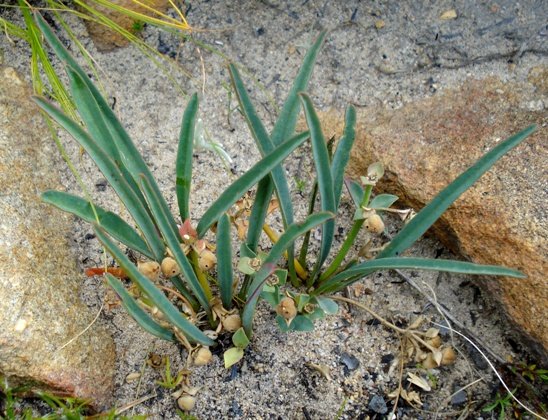Euphorbia silenifolia hiding the melkbol

Euphorbia silenifolia, in Afrikaans melkbol (milk bulb), is a stemless perennial. Above-ground it is a dwarf plant growing little beyond 5 cm in height, from a sometimes large underground, tuberous root reaching 7 cm in diameter. The common name of melkbol refers to this large, out-of-sight structure. The caudex may be up to three-branched, tufts of leaves growing stemless, directly from each tip.
This plant is found at a wide range of altitudes in sandy, clay or loam soils. It occurs in various habitats including sandstone fynbos slopes, renosterveld and scrub flats from Namaqualand, the Western Cape and Eastern Cape to Port Alfred.
It is mainly winter growing in the higher rainfall regions, avoiding the semi-arid parts. Often deciduous, the plant may become invisible above-ground during the summer months. This specimen was seen just below Sir Lowry’s Pass in October.
Note the pale brown, three-segmented fruit capsules. A green capsule may sometimes display small pointed, scattered protuberances, hairy or fleshy, along its surface. Four-segmented fruits are occasionally seen (Vlok and Schutte-Vlok, 2010; www.bihrmann.com; www.llifle.com).

